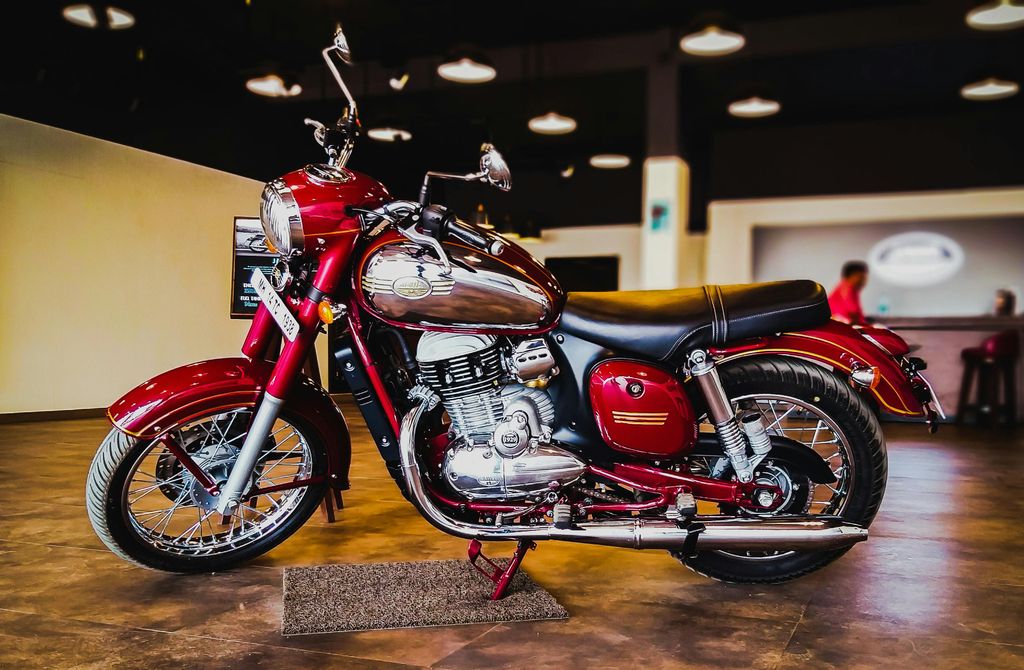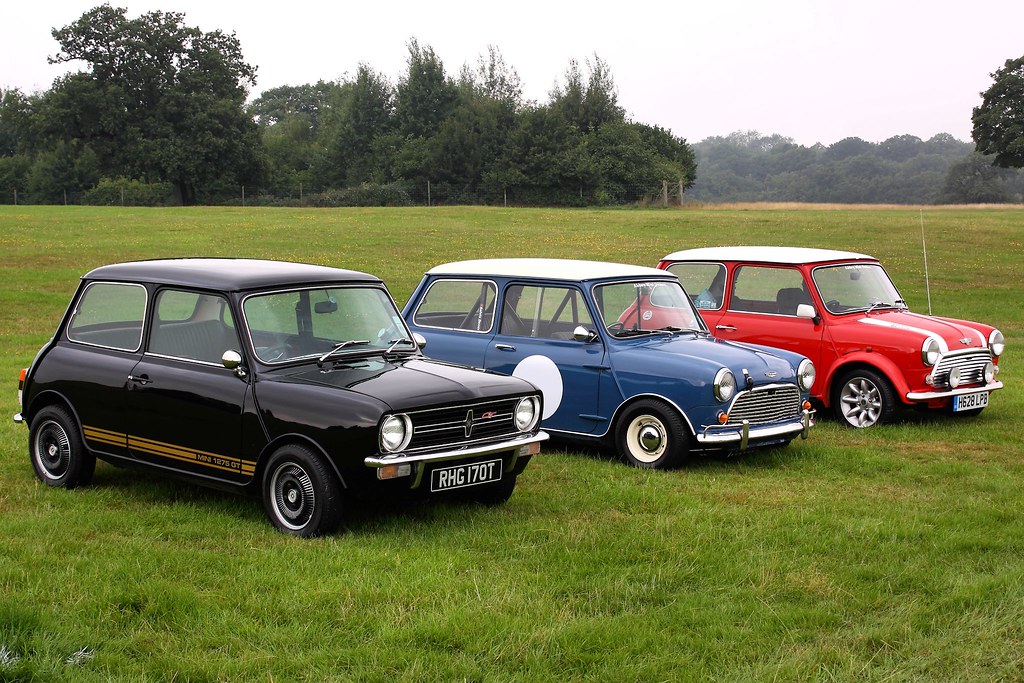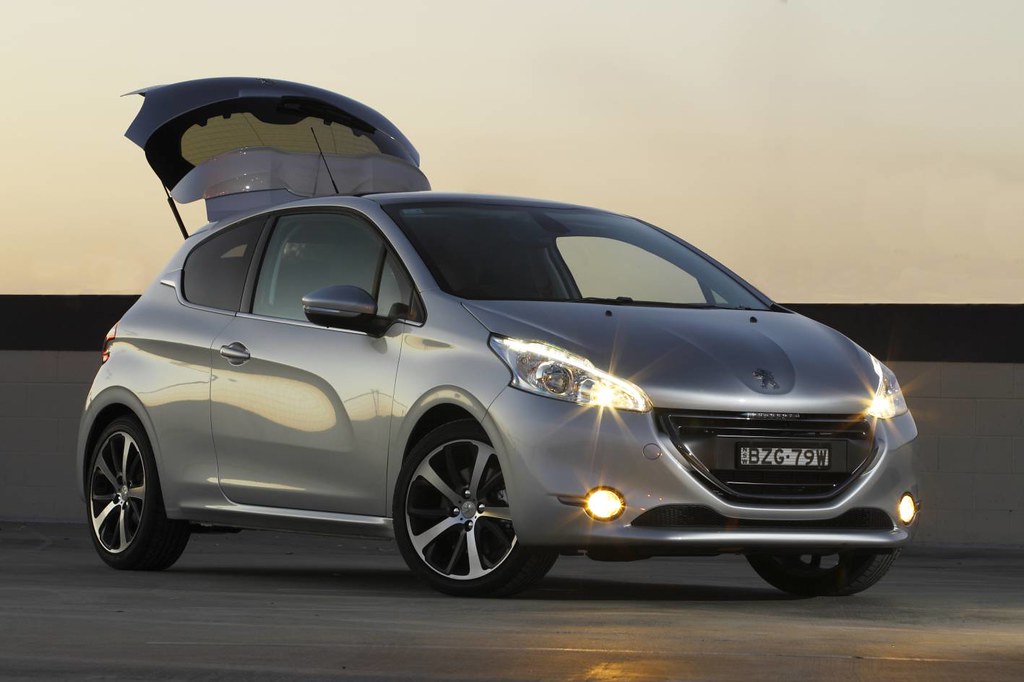
For many automotive enthusiasts, the allure of a sports car is undeniable. It’s a potent blend of exhilarating performance, cutting-edge design, and the promise of an adrenaline-pumping driving experience. The market, especially for vehicles under $50,000, suggests a perfect balance between thrill and everyday usability, with models like the Toyota GR86 and Mazda MX-5 Miata exemplifying how performance and reliability can coexist.
However, the pursuit of spirited driving can sometimes lead to a stark, disheartening reality. What begins as the excitement of owning a performance-oriented vehicle can quickly devolve into a nightmare of unexpected breakdowns and exorbitant repair bills. These issues frequently surface long before the 50,000-mile mark, turning dreams of open-road adventures into frustrating trips to the service center.
This in-depth article serves as a critical buyer’s warning, shedding light on nine specific sports and performance-oriented cars that have gained notoriety for their alarming lack of reliability in early ownership. Drawing insights from owner experiences and mechanic-led studies, we delve into the hidden defects, recurring mechanical failures, and even whole-engine meltdowns that plague these models, ensuring you’re equipped with the knowledge to avoid a short-lived automotive investment.

1. **BMW N54 (2007–2010): Turbo Engine Trouble** The BMW N54 engine, a powerhouse found in models like the 335i and 135i from 2007 to 2010, initially captivated enthusiasts with its impressive twin-turbocharged performance. It represented a significant leap in technology, offering robust power delivery and a dynamic driving experience that solidified BMW’s reputation for engineering prowess. These cars were, for many, the epitome of a luxury machine with undeniable sport appeal.
Yet, beneath this facade of German engineering, the N54 harbored a critical flaw: the notorious high-pressure fuel pump (HPFP). Owners frequently reported premature failures of the HPFP, which could manifest as sudden engine shutdowns or stalling while on the road. This wasn’t just an inconvenience; it was a serious safety and reliability concern that consistently tarnished the ownership experience.
BMW eventually acknowledged the widespread issue, issuing a recall and extending warranties to address the problematic HPFP. Despite these efforts, numerous owners continued to face substantial engine replacement bills, often under 60,000 miles. The cost and stress associated with these recurring problems created a significant financial burden for many, contradicting the expectation of premium reliability.
The saga of the BMW N54 engine serves as a poignant reminder that even luxury machines with immense sport appeal can become unreliable cars. For those considering these models, the turbulence under the hood often outweighs the initial thrill, making diligent research into service history an absolute necessity. It highlighted how critical components could undermine an otherwise stellar performance package.
Car Model Information: 2011 BMW 328 328i xDrive
Name: BMW 3 Series (E90)
Manufacturer: BMW
ModelCode: ubl
Production: December 2004 – October 2013
ModelYears: 2006–2012
Assembly: ubl
Designer: Joji Nagashima,Marc Michael Markefka (coupé and convertible)
Class: Compact executive car
Related: BMW Z4 (E89),BMW 1 Series (E87),BMW X1 (E84)
Layout: ubl
Platform: BMW L2
Engine: Petrol engine,BMW N43,BMW N52,BMW N54,BMW S65,Diesel engine,BMW M47,BMW M57
Transmission: ubl
BodyStyle: Unbulleted list
Wheelbase: Convert
Length: convert
Width: Convert
Height: Convert
Weight: Convert
Predecessor: BMW 3 Series (E46)
Successor: unbulleted list
Categories: 2010s cars, All Wikipedia articles written in British English, All articles with unsourced statements, Articles with short description, Articles with unsourced statements from January 2024
Summary: The fifth generation of the BMW 3 Series range of compact executive cars is designated under the model codes E90 (saloon), E91 (estate, marketed as ‘Touring’), E92 (coupé) and E93 (convertible). The model was introduced in December 2004, and produced by BMW until October 2013 and is often collectively referred to as the E90, E9x, or occasionally, the E92.
The E92 335i was the first 3 Series model produced with a turbocharged petrol engine. It was also the first 3 Series to include the iDrive operating system, which consists of navigation, infotainment and essential vehicle functions. The E9x saw the introduction of run-flat tyres to the 3 Series range. Models with run-flat tires are not equipped with a spare tyre.
The E90/E92/E93 M3 is the only generation of M3 to be powered by a V8 engine. Introduced in 2007, it uses the BMW S65 naturally aspirated V8 engine and was produced in saloon, coupé and convertible body styles.
Following the introduction of the F30/F31 3 Series in February 2012, the E90/E91 saloons and estates were phased out. However due to their later introduction, the E92/E93 coupés and convertibles remained in production through the 2013 model year, after which they were replaced by the F32/F33 4 Series models.
Get more information about: BMW 3 Series (E90)
Buying a high-performing used car >>>
Brand: BMW Model: 335i
Price: $8,900 Mileage: 98,600 mi.
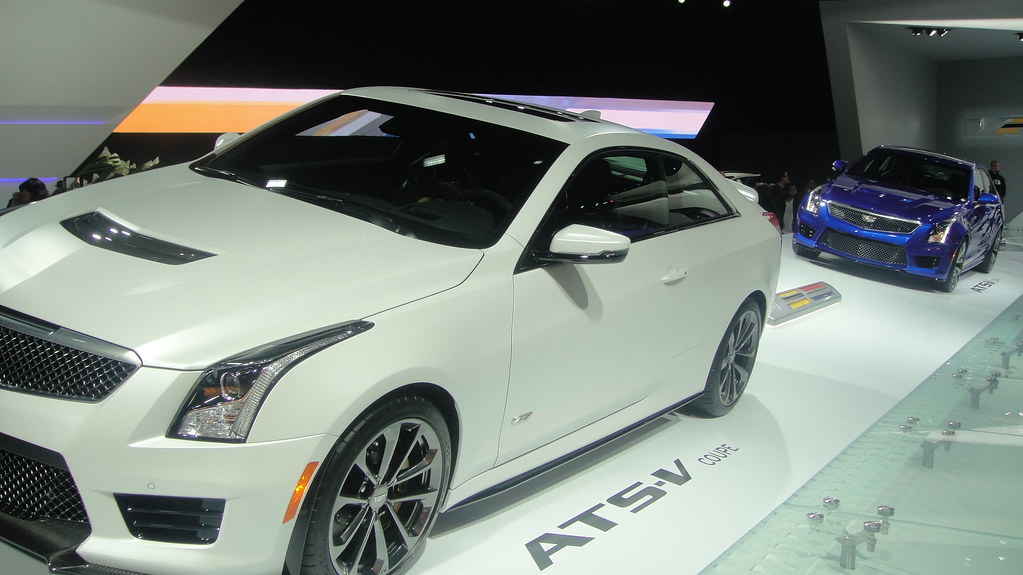
2. **Cadillac ATS** The Cadillac ATS arrived with a clear mission: to challenge the established German luxury sport sedans, particularly the BMW 3-Series. It promised a compelling blend of luxury and performance in a compact package, offering sharp handling and a refined interior that aimed to capture discerning drivers. For a moment, it truly felt like a genuine contender, a proper good driver’s car.
However, the ATS’s ambitions were unfortunately marred by persistent reliability concerns, especially regarding its powertrain. Owners frequently reported issues with both the engine and transmission, problems that surfaced relatively early in the car’s life. These mechanical woes quickly eroded the confidence owners had in their sophisticated American sport sedan, dampening the driving pleasure.
While its refined interior and exceptional handling garnered a loyal following, these positives often failed to compensate for the pain of expensive repairs. Drivers found themselves appreciating the car’s dynamics on the road but dreading the inevitable trips to the service center. This constant cycle of enjoyment and frustration became a hallmark of ATS ownership.
The Cadillac ATS, therefore, stands as a cautionary tale of high aspirations meeting a shortfall in long-term dependability. It was a car that tried to punch above its weight, delivering an exciting driving experience, but ultimately lacked the durability to sustain its promise. Its reliability issues defined its reputation more than its commendable performance.
Car Model Information: 2017 Cadillac ATS 2.0L Turbo Luxury
Name: Cadillac ATS
Manufacturer: General Motors
Production: ubl
ModelYears: 2013–2019
Assembly: Lansing, Michigan
Designer: ubl
Class: Compact executive car
BodyStyle: sedan (car)
Platform: GM Alpha platform
Related: ubl
Layout: ubl
Engine: ubl
Transmission: Tremec TR-3160 transmission,Tremec TR-6060 transmission,GM 6L50 transmission,GM 6T70 transmission,GM 8L45 transmission
Wheelbase: 2776 mm
Abbr: on
Length: 182.8 in
Disp: flip (coupe)
Width: 71.1 in
Height: 55.9 in
Weight: convert
Predecessor: Cadillac BLS
Successor: Cadillac CT4
FrontSuspension: MacPherson struts
RearSuspension: Multi-link suspension
Categories: 2010s cars, All-wheel-drive vehicles, Articles with short description, CS1 Chinese-language sources (zh), Cadillac vehicles
Summary: The Cadillac ATS is a compact executive car (D-segment) manufactured by General Motors and marketed by Cadillac from 2013 to 2019 model years, available in both four-door sedan and two-door coupé body styles. In the US, it is the brand’s first locally-built entry-level premium car since the Cimarron, and in Europe, it is the successor of the Swedish-built Cadillac BLS. The ATS was developed at the General Motors Technical Center in Warren, Michigan and assembled the ATS at the Lansing Grand River Assembly plant in Lansing, Michigan.
The ATS is based on General Motors’ Alpha platform and is offered in either rear- or all-wheel drive configurations. The ATS base engine had been a naturally aspirated 2.5-liter I-4 gasoline engine that produces 202 hp (151 kW), until the 2016 model year. Optional engines include a 2.0-liter turbocharged I-4 gasoline engine that produces 272 hp (203 kW) and a naturally aspirated 3.6-liter V6 gasoline engine that produces 321 hp (239 kW). The 2.0-liter engine replaced the 2.5-liter engine as the base engine for the 2017 model year. All versions were equipped with a 6-speed GM 6L45 Hydra-Matic automatic transmission as standard until the 2015 model year. An 8-speed automatic transmission was introduced for the 2016 model year. The 2.0-liter turbocharged, rear-wheel drive version can be mated to an optional 6-speed Tremec M3L TR-3160 manual transmission.
Prior to the debut of the ATS, Cadillac’s smallest vehicle was the E-segment CTS. The CTS was comparable in price to D-segment competitors like the Audi A4, the BMW 3 Series, the Lexus IS and the Mercedes-Benz C-Class, however was comparable in size and weight to the more expensive BMW 5 Series. Although Cadillac believed that customers would favor a Mercedes-Benz E-Class-sized sedan at the price of a 3 Series, this assumption was proven to be incorrect. Cadillac’s research found that target customers who already owned vehicles like the 3 Series or A4 did not want a larger vehicle.
Cadillac debuted the ATS to the press in the United States in January 2012, placed the ATS into production in July 2012 and began selling the ATS in the United States in August 2012 as a 2013 model. GM began selling the ATS in China in November 2013. Cadillac sold the ATS in the United States, Canada, Mexico, Europe, the Middle East, China, Japan, and South Korea. The ATS was replaced by the Cadillac CT4 in 2019 for the 2020 model year.
Get more information about: Cadillac ATS
Buying a high-performing used car >>>
Brand: Cadillac Model: ATS
Price: $15,024 Mileage: 72,836 mi.
Read more about: Gone But Not Forgotten: Unearthing the Stories Behind 14 Iconic American Cars That Drove Off into the Sunset
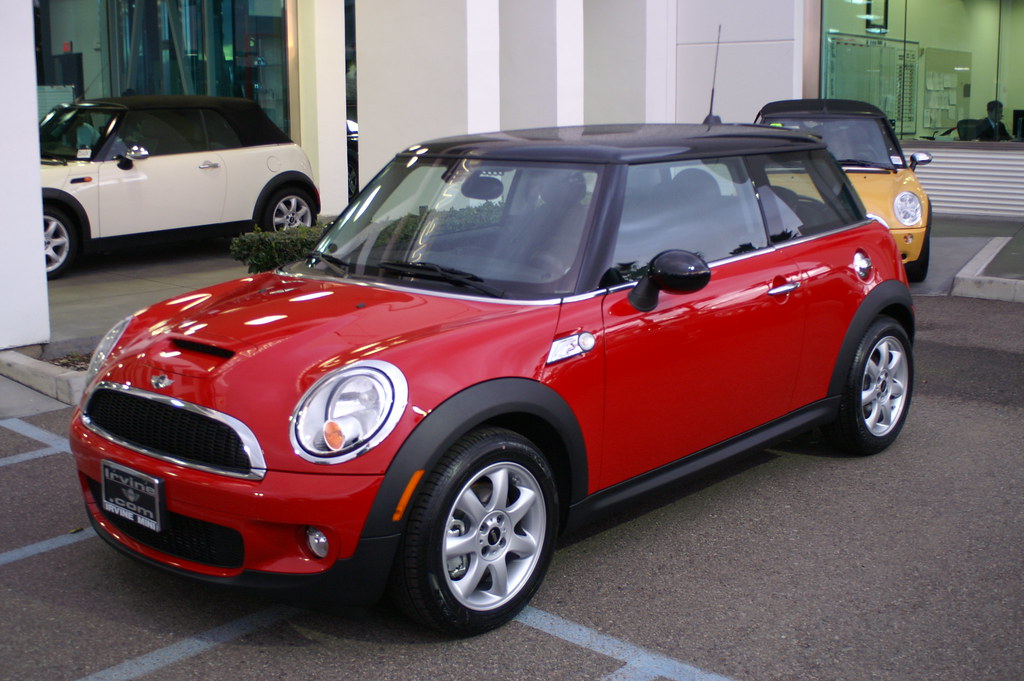
3. **Mini Cooper** The Mini Cooper has always been synonymous with distinctive style, undeniable charm, and an incredibly engaging driving experience. Its compact size and nimble handling made it a blast to drive, often described as feeling like a little go-kart that you could zip around corners with effortless joy. This unique character earned it a dedicated legion of fans worldwide.
Unfortunately, these delightful qualities frequently came bundled with a reputation for frequent and frustrating breakdowns. Owners commonly reported engine failures and electrical malfunctions that appeared far earlier than expected, often leaving them stranded and wishing for the sensible reliability of a typical commuter car. The financial toll of these issues quickly mounted, challenging the perception of its fun-loving nature.
The conflict between the Mini Cooper’s playful driving dynamics and its problematic reliability became a significant point of contention for many. While its distinctive design and spirited performance won hearts, the ongoing mechanical troubles cost it long-term credibility among a wider audience. The pleasure of driving was often overshadowed by the worry of impending repair bills.
Ultimately, the Mini Cooper became synonymous with fun that, for many owners, faded far too quickly. Most still find them delightful to drive, but buying one often means going into it with the expectation of high repair costs. It’s a testament that even the most charming personalities cannot fully compensate for fundamental mechanical shortcomings.
Car Model Information: 2023 MINI Hardtop Cooper
Sp: uk
Caption: 1959 Morris Mini-Minor (first one built)
Name: Mini
Aka: Austin 850,Rover Mini,Austin Cooper,Austin Mini,Austin Partner,Austin Seven,Innocenti Mini,Leyland Mini,Morris 850,Morris Mascot,Morris Mini Minor,Riley Elf,Wolseley 1000 (South Africa),Wolseley Hornet
Layout: Front-engine, front-wheel-drive layout
Manufacturer: British Motor Corporation,British Leyland,Rover Group
Production: 1959–2000 (5.38 million)
Class: City car
BodyStyle: sedan (car),convertible,Station wagon,sedan delivery,coupe utility
Engine: BMC A-series engine,Straight-four engine
Designer: Alec Issigonis,John Sheppard (car designer)
Transmission: 4-speed manual,AP automatic transmission,5-speed manual (optional extra on some later models)
Length: cvt,cvt,cvt
Width: cvt
Height: cvt
Weight: cvt
Wheelbase: cvt,cvt
Related: Mini Moke,Austin Metro,Innocenti Mini,Mini Wildgoose,Mini Marcos
Successor: Austin Metro,Mini Hatch
Assembly: Panmure, New Zealand
Categories: 1960s cars, 1970s cars, 1980s cars, 1990s cars, 2000s cars
Summary: The Mini is a very small two-door, four-seat car, produced for four decades over a single generation, with many names and variants, by the British Motor Corporation (BMC) and its successors British Leyland and the Rover Group, and finally (briefly) under BMW ownership. Minis were built as fastbacks, estates, convertibles, and various other body styles. Minus a brief 1990s hiatus, from 1959 into 2000, an estimated 5.38 million of all variations combined were built, and the Mini’s engines also powered another 2 million Mini Metros, though the Mini eventually outlasted its successor.
Initially, the Mini was marketed under the Austin and Morris names, as the Austin Seven and Morris Mini-Minor; the Austin Seven was renamed Austin Mini in 1962 and Mini became a marque in its own right in 1969. Retrospectively, the car is known as the “Classic Mini” to distinguish it from the modern MINI family of vehicles produced since 2001 by German carmaker BMW, who took ownership of the Mini name following the sale of Rover Group in 2000.
This distinctive two-door car was designed for BMC by Sir Alec Issigonis. Its space-saving transverse engine and front-wheel drive layout – allowing 80% of the area of the car’s floorpan to be used for passengers and luggage – influenced a generation of car makers. The front-wheel-drive, transverse-engine layout were used in many other “supermini” style car designs such as Honda N360 (1967), Nissan Cherry (1970), and Fiat 127 (1971). The layout was also adapted for larger subcompact designs. In 1999, the Mini was voted the second-most influential car of the 20th century, behind the Ford Model T, and ahead of the Citroën DS and Volkswagen Beetle. It is also considered an icon of 1960s British popular culture.
The Mini Mark I had three major UK updates: the Mark II, the Clubman, and the Mark III. Within these was a series of variations, including an estate car, a pick-up, a van, and the Mini Moke, a jeep-like buggy. The performance versions, the Mini Cooper and Cooper “S”, were successful as both race and rally cars, winning the Monte Carlo Rally in 1964, 1965, and 1967. The Mini was manufactured in England at the Longbridge plant in Birmingham located next to BMC’s headquarters and at the former Morris Motors plant at Cowley, as well as in Australia (Victoria Park/Zetland BMC Australia factory) and later also in Spain (Authi), Belgium, Italy (Innocenti, as the Innocenti Mini), Chile, Malta, Portugal, South Africa, Uruguay, Venezuela, and Yugoslavia (IMV). In 1980, British Leyland launched the Mini’s follow-up, the Austin Metro, however the Mini outlasted it and continued to be produced at Longbridge until October 2000.
Get more information about: Mini
Buying a high-performing used car >>>
Brand: Mini Model: Cooper
Price: $25,992 Mileage: 16,186 mi.
Read more about: The Ultimate Statham Showdown: Ranking the 7 Must-Watch Action-Packed Bangers That Define His Legacy!
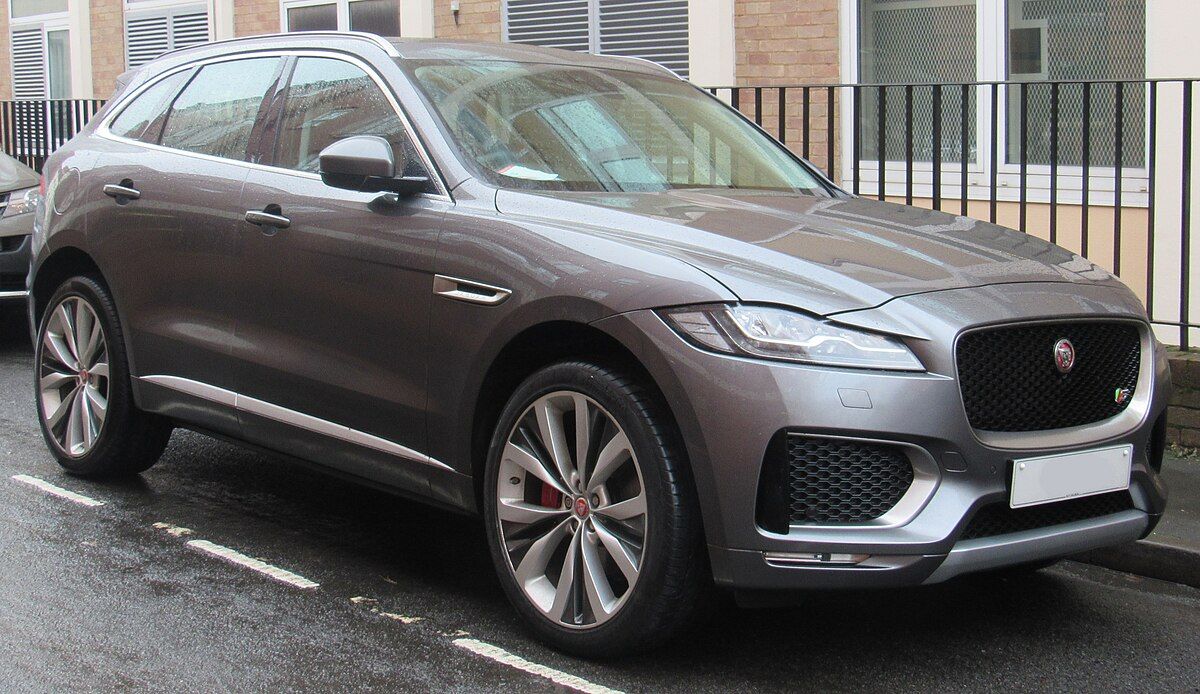
4. **Jaguar F-Pace** The Jaguar F-Pace entered the market as a luxurious and performance-oriented SUV, carrying the prestige of the iconic British brand. It promised a compelling combination of SUV practicality with Jaguar’s renowned driving dynamics, appealing to those who sought both sophistication and a spirited ride. On paper, it was designed to deliver an engaging experience that stood out in its segment.
However, the reality for many F-Pace owners diverged sharply from this promise, as the model gained a reputation for countless reliability problems. The context highlights a long and troubling list of issues, including engine, transmission, oil and cooling system leaks, electronic glitches, and fuel system problems. These multifaceted mechanical failures often surfaced early, leading to significant owner dissatisfaction.
These persistent issues translated directly into high costs of ownership, transforming what should have been a premium experience into a financial burden. The need for frequent and expensive repairs made the Jaguar F-Pace a model that, for many, qualified as a “nightmare brand.” Keeping this vehicle on the road proved to be a constant struggle against a tide of mechanical woes.
The Jaguar F-Pace stands out as a “must-avoid at all costs” if reliability is a priority. Its long list of endemic problems illustrates how even vehicles from esteemed luxury marques can falter significantly in terms of long-term dependability, underscoring the importance of scrutinizing a car’s mechanical integrity beyond its initial allure.
Car Model Information: 2021 Jaguar F-PACE S
Name: Jaguar F-Pace
Manufacturer: Jaguar Land Rover
ModelCode: X761
Production: February 2016–present
Assembly: Solihull plant
Class: Compact crossover SUV
BodyStyle: SUV
Layout: ubl
Platform: JLR D7a
Related: Jaguar XE,Jaguar XF (X260),Range Rover Velar
Engine: ubl
Motor: 106 kW
Abbr: on
Transmission: Manual transmission,ZF 8HP transmission
Drivetrain: Mild Hybrid
Battery: Kilowatt-hour,Lithium-ion battery
Wheelbase: 2874 mm
Length: 4731 mm
Width: 1936 mm
Height: 1667 mm
Weight: Convert
Designer: Ian Callum
Sp: uk
Categories: 2020s cars, Articles with short description, CS1 maint: archived copy as title, Cars introduced in 2016, Commons category link from Wikidata
Summary: The Jaguar F-Pace (X761) is a compact luxury crossover SUV made by Jaguar Land Rover, a British car manufacturer, under their Jaguar marque. It is the first Jaguar model in the SUV class. It was formally announced at the 2015 North American International Auto Show in Detroit, with sales commencing in 2016 following an unveiling at the 2015 International Motor Show Germany in Frankfurt.
The design of the F-Pace is based on the Jaguar C-X17 concept car, which was unveiled on September 9, 2013, at the Frankfurt Motor Show. The 2017 Jaguar F-Pace has been named the honorary winner of the 2017 World Car of the Year and World Car Design of the Year Awards at the New York International Auto Show. The F-Pace is built at Jaguar Land Rover’s Solihull plant along with the Range Rover Velar and employs an additional 1,300 workers.
Get more information about: Jaguar F-Pace
Buying a high-performing used car >>>
Brand: Jaguar Model: F-Pace
Price: $29,451 Mileage: 23,204 mi.
Read more about: Engine of Regret: 14 Car Models That Left Owners Begging for a Trade-In – A Data-Driven Warning
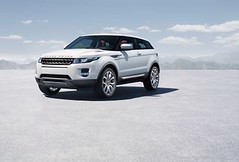
5. **Land Rover Range Rover** The Land Rover Range Rover commands an imposing presence and is globally recognized for its blend of luxury, prestige, and off-road capability. For many, it represents the pinnacle of SUV sophistication, often associated with powerful engines and a commanding driving position. This iconic vehicle often conveys an image of robust engineering and unwavering reliability, fitting a premium segment.
Unfortunately, the reality of Range Rover ownership, particularly for models experiencing early issues, often tells a different story. The context explicitly notes a long list of pervasive problems that plague these vehicles, chief among them being significant issues with the engine, transmission, air suspension, and electronics. These systemic failures can begin to manifest within the first few years of ownership, let alone as a used purchase.
The occurrence of these problems so early in a vehicle’s life translates into a continuous cycle of repairs and financial outlay for owners. What was intended to be a symbol of luxury and durability often becomes a source of ongoing frustration and unexpected expenses. The sheer frequency and nature of the issues suggest deeply rooted mechanical vulnerabilities.
The Land Rover Range Rover, despite its undeniable appeal and luxurious appointments, serves as a stark warning to buyers. The expectation of steadfast performance from such a premium vehicle often clashes with the reality of its persistent mechanical and electronic issues, making it a model where continued problems are almost to be expected, even in its early years on the road.
Following our exploration of some high-profile performance cars that quickly turn into financial pits, we now delve deeper into the market. This section uncovers four more sporty vehicles that, despite their initial appeal or practical promises, frequently betray owners with significant mechanical and electrical failures long before reaching the 50,000-mile mark. These models illustrate how manufacturing flaws and hidden defects can undermine even the most ambitious designs, transforming early ownership into a constant battle against unexpected repair bills. Buyers seeking long-term satisfaction and peace of mind should approach these vehicles with extreme caution, prioritizing diligence over desire.
Car Model Information: 2024 Volkswagen Tiguan 2.0T SE 4MOTION
Caption: 2022 Range Rover SE P440e (L460, fifth generation, United Kingdom)
Aka: unbulleted list
Name: Range Rover
Manufacturer: unbulleted list
Production: 1969–present
Assembly: unbulleted list
Class: unbulleted list
Layout: Front-engine, four-wheel-drive layout
Sp: uk
Categories: 1980s cars, 1990s cars, 2000s cars, 2010s cars, 2020s cars
Summary: The Land Rover Range Rover, generally shortened to Range Rover, is a 4WD luxury mid to full size crossover marque and sub-brand of Jaguar Land Rover, owned by India-based Tata Motors. The Range Rover line was launched in 1970 by British Leyland and since 2022 is in its fifth generation.
Additional models have been launched under the Range Rover name, including the Range Rover Sport, Range Rover Evoque, and Range Rover Velar.
Get more information about: Range Rover
Buying a high-performing used car >>>
Brand: Land Rover Model: Range Rover
Price: $26,995 Mileage: 7,250 mi.
Read more about: Redefining Speed and Savings: 10 Sports Cars That Master 30 MPG Highway
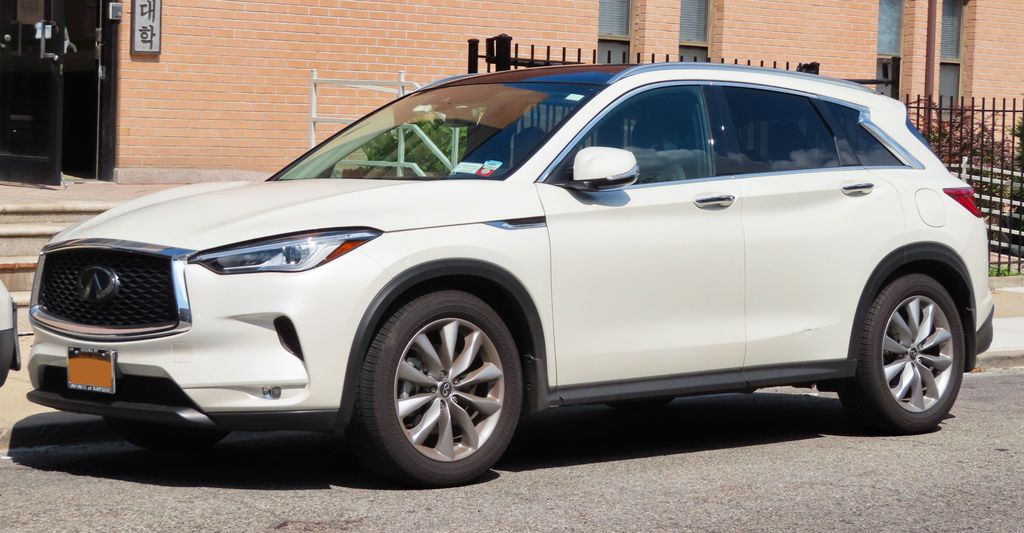
6. **Infiniti QX50: Sharing Nissan’s Transmission Troubles** The Infiniti QX50, a luxury crossover, shares much of its engineering DNA with Nissan models, inheriting both strengths and, unfortunately, critical weaknesses. While Infiniti aims to deliver a premium experience with refined interiors and a more upscale feel, the QX50’s powertrain often becomes its Achilles’ heel. Owners frequently encounter the same problematic continuously variable transmission (CVT) issues that plague its Nissan counterparts.
This CVT, designed to use pulleys connected via a steel band rather than traditional gears, has gained notoriety for premature failure. Such breakdowns are not minor inconveniences; they typically necessitate an expensive replacement, as these Jotco-brand CVTs are generally not repairable. This means that a seemingly minor issue can quickly escalate into a substantial financial burden, often before the vehicle has even approached the 50,000-mile mark.
Beyond the transmission, the QX50 has also been flagged for a ‘problematic engine that just does not last much beyond its first lease.’ This dual threat of a failing transmission and a short-lived engine combines to create a very undesirable ownership experience. The expectation of luxury-grade dependability clashes sharply with the reality of recurring, costly mechanical issues that emerge shockingly early.
For a vehicle positioned in the luxury segment, consistent powertrain issues erode buyer confidence and tarnish the brand’s reputation for quality. The Infiniti QX50 serves as a compelling reminder that even when paying a premium, shared mechanical components can lead to shared reliability nightmares. Its sleek design and comfortable cabin do little to offset the significant costs and frustration associated with its core mechanical vulnerabilities.
Car Model Information: 2020 INFINITI QX50 Luxe
Name: Infiniti QX50
Caption: Infiniti QX50 (J55)
Manufacturer: Nissan
Aka: unbulleted list
Production: unbulleted list
Class: Compact executive car,Crossover (automobile)
BodyStyle: SUV
Layout: unbulleted list
Categories: 2020s cars, All-wheel-drive vehicles, All articles with unsourced statements, Articles with short description, Articles with unsourced statements from September 2025
Summary: The Infiniti QX50, formerly the Infiniti EX until 2013, is a crossover SUV marketed by Infiniti, Nissan’s luxury division between 2007 and 2025. It was produced over two generations: one generation under both EX and QX50 nameplates, and the second generation under the QX50 nameplate. The first generation model was also marketed as the Nissan Skyline Crossover in Japan.
The first generation QX50 was a minor model update of the EX with its nameplate changed to QX50 to align with the marque’s new Q and QX nomenclature introduced for model year 2013 (China) and model year 2015 (United States). The second-generation QX50 entered production in November 2017 as a 2019 model.
Get more information about: Infiniti QX50
Buying a high-performing used car >>>
Brand: Infiniti Model: QX50
Price: $21,950 Mileage: 69,041 mi.
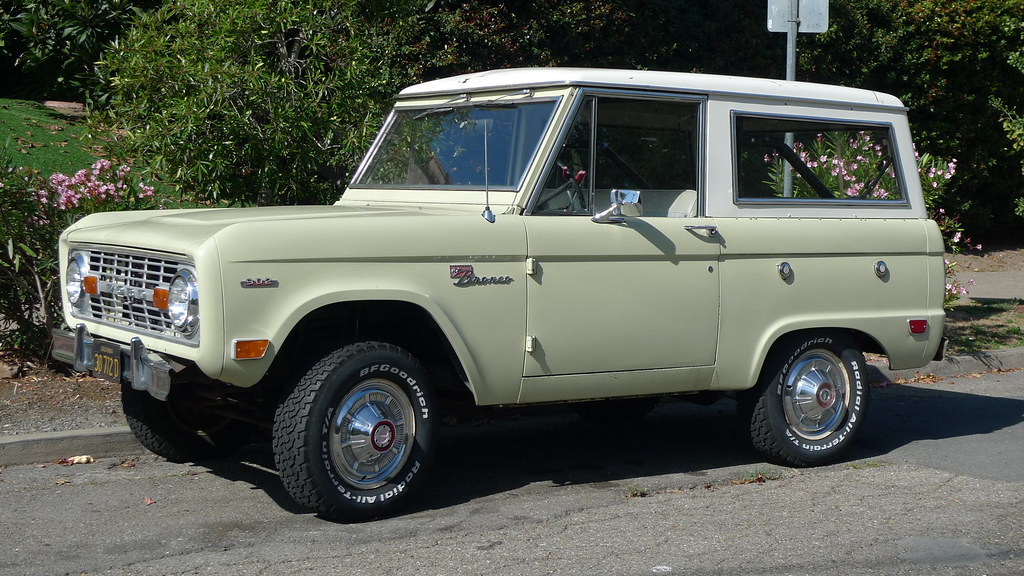
7. **Ford Bronco Sport: EcoBoost Engine’s Fiery Flaws** The Ford Bronco Sport arrived promising rugged capability and adventurous spirit in a compact SUV package, appealing to those who desired the Bronco lifestyle with a touch more practicality. However, beneath its capable exterior, the model harbors a well-documented Achilles’ heel in its EcoBoost engine, particularly the 1.5L 3-cylinder variant shared with the Ford Escape. This engine has an ‘established history of problems’ that can quickly turn a weekend warrior into a repair bay regular.
A primary concern revolves around cracking fuel injectors, a defect that poses a serious ‘fire risk’ for owners. This isn’t merely a performance hiccup; it’s a critical safety issue that has drawn significant attention, necessitating recalls and consumer warnings. Such a fundamental flaw in a core component like the fuel injection system indicates deeper manufacturing shortcomings that undermine the entire vehicle’s integrity, surfacing long before the 50,000-mile milestone and causing owners immense distress and potential danger.
Furthermore, the Bronco Sport’s EcoBoost engine is prone to other significant mechanical woes, including ‘cooling issues such as leaks and head gasket failures.’ These problems contribute to an escalating cycle of repairs that can quickly diminish the vehicle’s value and the owner’s peace of mind. The constant need for attention to leaks and potential engine overheating issues transforms the dream of adventure into a stressful reality.
For a vehicle designed to inspire confidence and tackle diverse terrains, early and recurring engine-related issues are particularly damaging, severely impacting its reputation. The Ford Bronco Sport, despite its appealing aesthetics and off-road branding, demonstrates how even modern engine technology can be marred by fundamental design and manufacturing flaws. This makes it a questionable long-term investment for reliability-conscious buyers, forcing owners to question the very promise of durability and turning what should be an adventurous vehicle into a source of anxiety.
Car Model Information: 2024 Volkswagen Tiguan 2.0T SE 4MOTION
Name: Ford Bronco Sport
ModelCode: CX430
Wheelbase: 105.1 in
Abbr: on (2.0)
Layout: Front-engine, all-wheel-drive
Designer: Paul Wraith
Sp: us
Related: ubl
Weight: convert
Height: convert
Width: 74.3 in
Length: 172.7 in
Transmission: Automatic Transmission
Engine: Gasoline engine,Ford Ecoboost engine,Ford Ecoboost engine
Platform: Ford C2 platform
Chassis: Unibody
BodyStyle: Sport utility vehicle
Class: Compact crossover SUV
Production: October 2020 – present
Assembly: Hermosillo,Sonora
Manufacturer: Ford Motor Company
ModelYears: 2021–present
Powerout: {{convert,181,hp,PS kW,0,abbr=on
Caption: 2021 Ford Bronco Sport Big Bend
Categories: All-wheel-drive vehicles, All Wikipedia articles written in American English, Articles with short description, CS1 Brazilian Portuguese-language sources (pt-br), CS1 Spanish-language sources (es)
Summary: The Ford Bronco Sport is a compact crossover SUV sold by the Ford Motor Company and marketed under the Ford Bronco nameplate. It was released alongside the sixth generation Bronco body-on-frame SUV, featuring a similar retro and off-road styling in a smaller footprint. The vehicle is based on the front-wheel drive-based, unibody C2 platform, which is also used by the Ford Escape crossover and Maverick pickup.
Get more information about: Ford Bronco Sport
Buying a high-performing used car >>>
Brand: Ford Model: Bronco Sport
Price: $26,995 Mileage: 7,250 mi.
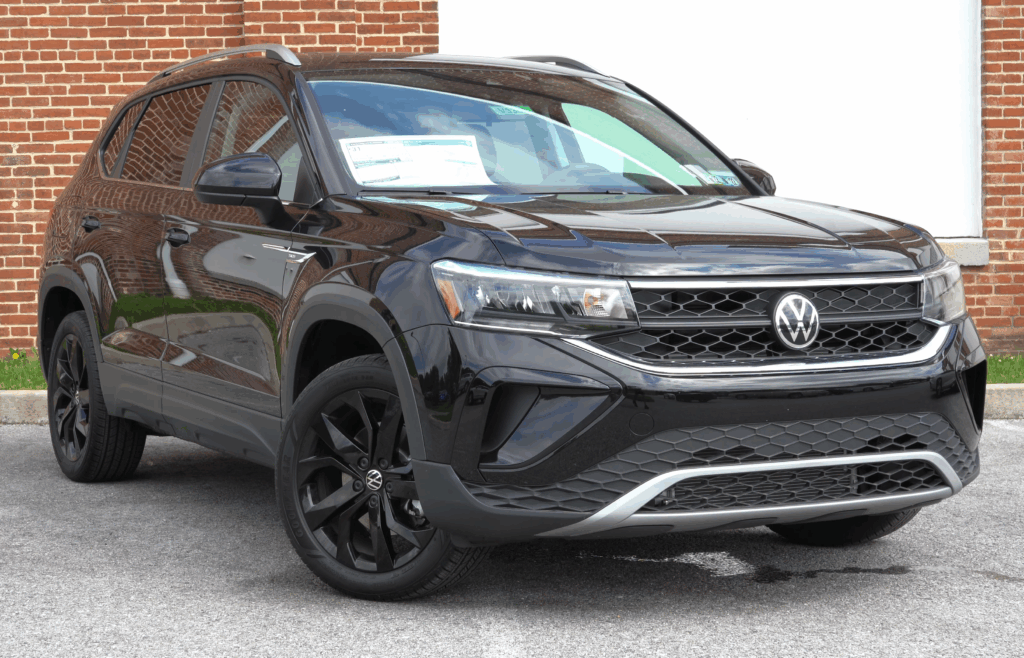
8. **Volkswagen Taos: Turbo Engine and Transmission Woes** The Volkswagen Taos entered the compact SUV market with a distinctive European flair, aiming to capture buyers seeking a blend of practicality and refined driving dynamics. However, its small-displacement 1.5 L turbocharged engine, intended to provide efficient power, has instead become a source of significant owner frustration. This engine type is notorious for experiencing ‘leaks, fuel system issues, and even total engine failure’ at remarkably low mileages.
The problems associated with the Taos’s engine are not isolated incidents; they represent systemic vulnerabilities that plague the model’s early ownership. From minor, yet persistent, leaks that indicate manufacturing defects to more catastrophic fuel system issues, the engine struggles to deliver the long-term dependability expected from a modern vehicle. The ultimate fear of ‘total engine failure’ well before 50,000 miles is a stark reality for too many owners.
Adding to these engine woes is the ‘complicated dual clutch automated manual transmission.’ While such transmissions can offer quick shifts and improved efficiency, Volkswagen’s implementation in the Taos has proven to be a source of ‘rising costs of ownership.’ Owners often report harsh shifting, unexpected engagement issues, and premature wear, all contributing to an unreliable and unenjoyable driving experience.
The Volkswagen Taos, therefore, exemplifies how advanced engineering, when not fully refined, can lead to widespread reliability issues. Its combination of a problematic turbocharged engine and a complex, unreliable transmission turns what should be an efficient and enjoyable daily driver into a constant drain on finances and patience. For buyers prioritizing dependability, the Taos presents a clear cautionary tale, highlighting the risks of cutting-edge technology without proven robustness.
Car Model Information: 2022 Volkswagen Taos 1.5T S
Name: Volkswagen Taos/Tharu
Manufacturer: Volkswagen
Aka: Volkswagen Tharu
Production: ubl
Assembly: ubl
Designer: Klaus Zyciora
Class: Compact crossover SUV
BodyStyle: SUV
Layout: Front-engine, front-wheel-drive,Front-engine, all-wheel-drive
Platform: Volkswagen Group MQB A1
Related: SEAT Ateca,Škoda Karoq,Jetta VS5
Engine: Petrol engine,Turbocharger,1.4 L TSI 150 I4,1.5 L TSI 160 I4,Multi-point fuel injection,2.0 L TSI 190 I4
Transmission: Manual transmission
Battery: 44.1 kWh (e-Tharu)
ElectricRange: convert
Wheelbase: 105.9 in
Abbr: on
Order: 4453 mm
Length: 175.8 in
Width: 1841 mm
Height: convert
ModelYears: 2022–present
Categories: All-wheel-drive vehicles, Articles with short description, CS1 Brazilian Portuguese-language sources (pt-br), CS1 Mexican Spanish-language sources (es-mx), CS1 Portuguese-language sources (pt)
Summary: The Volkswagen Taos is a compact crossover SUV marketed by Volkswagen. It was first released in October 2018 as the Volkswagen Tharu in China, while the Taos was released in October 2020 as a restyled version of the Tharu for the North American, South American, and Russian markets. In the brand’s lineup, the vehicle is positioned below the Tiguan, and in South America and China above the T-Cross. It is not marketed in core European market.
The Taos is named after Taos, New Mexico. The Tharu name is derived after the eponymous Tharu people, an ethnic group indigenous to Nepal and Northern India.
Get more information about: Volkswagen Taos
Buying a high-performing used car >>>
Brand: Volkswagen Model: Taos
Price: $20,000 Mileage: 10,385 mi.
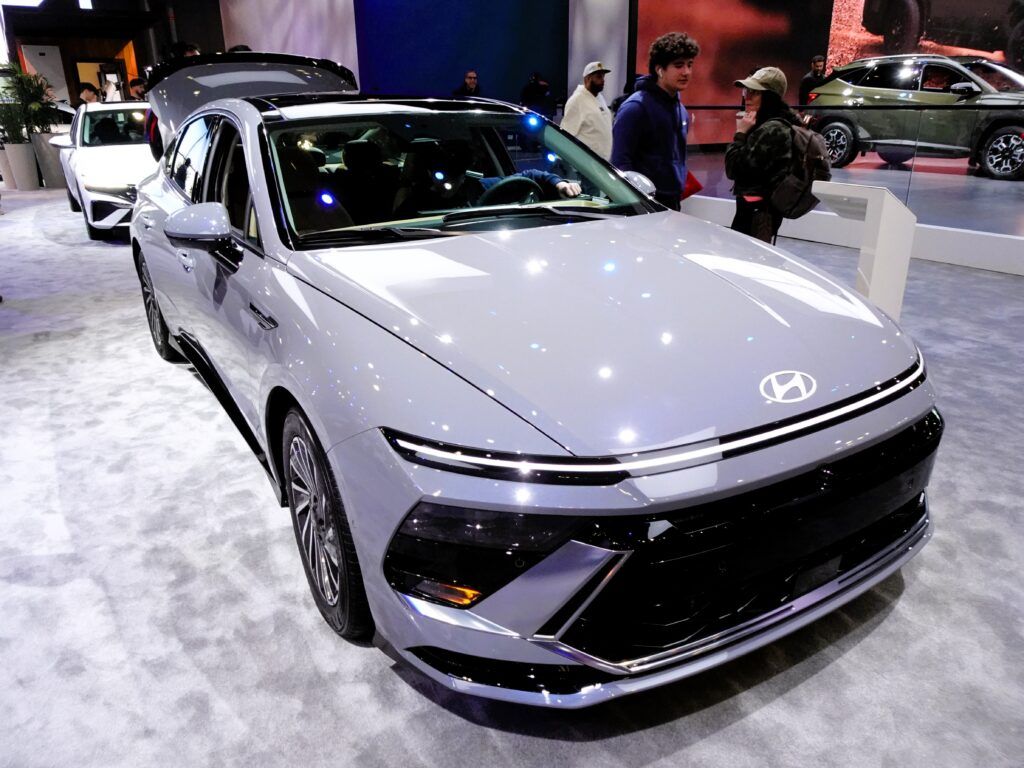
9. **Hyundai Sonata (2011-2014): GDI Engine’s Costly Legacy** The Hyundai Sonata from the 2011-2014 model years made a significant splash in the midsize sedan segment with its ‘sharp, futuristic design and generous features list.’ It was a bold aesthetic statement that ‘paid off visually,’ captivating buyers with its sleek lines and modern appeal. For many, it represented a compelling blend of style and value, positioning Hyundai as a serious contender against more established brands.
However, beneath this attractive exterior, a critical flaw emerged that dramatically impacted the ownership experience: pervasive ‘engine problems plagued many owners.’ The specific culprit was the infamous GDI (Gasoline Direct Injection) engine, which developed a reputation for ‘failures often came early in the car’s life.’ These catastrophic issues often manifested as unexpected breakdowns, engine knocking, or even complete engine seizure.
The financial repercussions of these GDI engine failures were severe, frequently leaving drivers with ‘unexpected repair bills that felt more like ransom notes.’ What began as a smart, stylish purchase quickly devolved into a source of immense financial strain and frustration. While the Sonata offered desirable attributes like ‘strong fuel economy and a spacious interior,’ these positives could not outweigh the fundamental lack of mechanical reliability.
The Hyundai Sonata from this era serves as a poignant reminder that cutting-edge design and a comprehensive features list mean little if the core mechanical components cannot withstand the test of time. Its reliability issues ‘dragged this model down,’ becoming a ‘poster child for why you don’t skimp on the engine.’ The model’s struggles taught automakers that pushing design boundaries must be accompanied by unwavering dependability, fundamentally altering how many buyers viewed the brand’s long-term commitment to quality.
**Lessons Learned From Cars That Couldn’t Last**
Our journey through these nine sports and performance-oriented vehicles, all notorious for faltering before the 50,000-mile mark, reveals a clear and undeniable truth: immediate appeal and impressive specifications are no substitutes for fundamental reliability. While some owners might defy the odds and keep these cars running longer, often, it comes at a significant financial and emotional cost, as mechanic-led studies and owner reports consistently confirm.
The repeated breakdowns—ranging from complex engine designs prone to internal damage, notorious high-pressure fuel pump failures, and problematic CVTs, to critical fire risks from faulty fuel injectors and systemic electrical issues—underscore a deeper problem within specific models. These aren’t just isolated glitches; they are often deeply rooted manufacturing flaws that transform the dream of spirited driving into a nightmare of constant repair bills and diminished confidence.
Car Model Information: 2018 Hyundai SONATA Sport
Name: Hyundai Sonata
Caption: 2024 Hyundai Sonata SEL (US)
Manufacturer: Hyundai Motor Company
Production: 1985–present
Class: Mid-size car
BodyStyle: sedan (automobile)
Layout: ubl
Predecessor: Hyundai Stellar
Categories: 1990s cars, 2000s cars, 2010s cars, 2020s cars, All Wikipedia articles written in American English
Summary: The Hyundai Sonata is a mid-size car that has been manufactured by Hyundai since 1985. The first generation Sonata, which was introduced in 1985, was a facelifted version of the Hyundai Stellar with an engine upgrade, and was withdrawn from the market in two years due to poor customer reaction. While the nameplate was originally only sold in South Korea, the second generation of 1988 was widely exported. The Sonata is currently manufactured in South Korea, China, and Pakistan. It was named after the musical term, sonata.
Get more information about: Hyundai Sonata
Buying a high-performing used car >>>
Brand: Hyundai Model: Sonata
Price: $12,966 Mileage: 91,951 mi.
For buyers, the message is clear: research beyond the showroom shine. Dive into reliability indexes, scrutinize recall histories, and seek out comprehensive maintenance records. A car’s true value, especially a performance-oriented one, is measured not just by its initial thrill but by its unwavering dependability over the long haul. Avoiding these known pitfalls will save you money, time, and, most importantly, your peace of mind on the road.

